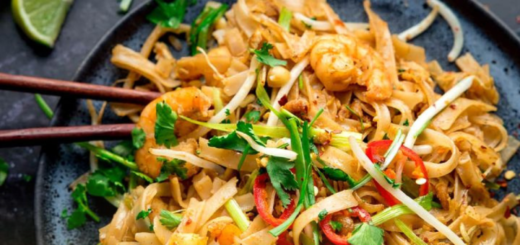Ancient Drinks People Forgot Were Healthy

Long before synthetic supplements and modern wellness trends emerged, ancient civilizations created health-enhancing beverages from herbs, roots, spices, and fermented ingredients. These elixirs nourished the body, balanced the mind, and strengthened the immune system. Sadly, many of these time-honored drinks have faded into obscurity. Their modern replacements rarely offer the same nutritional depth or natural purity. Let’s journey through time and rediscover forgotten ancient drinks that once held revered places in kitchens and apothecaries alike. These age-old beverages not only tasted wonderful but also promoted holistic well-being.
1. Kvass – The Russian Probiotic Powerhouse
Slavic people began brewing kvass over a thousand years ago. This fermented drink, made from rye bread, carries a slightly sour and fizzy taste. Kvass boasts natural probiotics, essential for gut health, and offers enzymes that aid digestion.
Peasants and aristocrats alike consumed kvass daily. Its mild alcohol content remained negligible, but its benefits for the digestive system rivaled modern probiotic beverages. Today, commercial soft drinks have pushed kvass into the margins, yet its health advantages remain unmatched by sugar-laden sodas.
2. Posca – Rome’s Military Hydration Secret
Roman soldiers sustained themselves with a drink called posca, a tangy mix of vinegar, water, and herbs. This beverage quenched thirst, killed harmful microbes in unclean water, and replenished electrolytes after intense labor.
Commanders believed posca built stamina and mental clarity. While vinegar may not sound appealing to modern taste buds, diluted and seasoned correctly, it becomes an excellent recovery drink. Apple cider vinegar tonics echo its essence, but posca possessed a more comprehensive mineral profile, especially when infused with herbs like coriander and mint.
3. Tej – Ethiopia’s Herbal Honey Wine
Ethiopians began brewing tej, a honey-based wine, over 2,000 years ago. Fermented with gesho leaves—a local bitter herb similar to hops—tej offered antibacterial properties and immune-boosting nutrients.
People didn’t just drink tej for pleasure; they saw it as a remedy for fatigue and respiratory problems. Honey served as a natural antibiotic, and gesho provided anti-inflammatory compounds. The drink fostered community bonding and spiritual ceremonies, but few today remember its therapeutic legacy.
4. Chicha – The Andean Digestive Elixir
In the highlands of Peru and Bolivia, indigenous communities brewed chicha, a fermented corn drink that balanced digestive health and enhanced endurance. Women chewed the corn to start enzymatic breakdown before fermentation, introducing friendly bacteria to the drink.
Locals praised chicha for its role in digestion and nutrient absorption. The fermentation process increased the availability of B vitamins and enzymes. Despite its unpleasant preparation methods by modern standards, chicha held medicinal significance in ancient diets and deserves renewed attention in probiotic discussions.
5. Oxymel – Greek and Persian Healing Syrup
Ancient healers like Hippocrates often prescribed oxymel, a mixture of honey, vinegar, and medicinal herbs. This drink treated sore throats, boosted immunity, and eased inflammation. Persian doctors extended its applications by adding ginger, thyme, or garlic.
The honey soothed the throat, while vinegar and herbs fought infections. Unlike modern syrups loaded with sugar and artificial flavors, oxymel offered genuine healing. Herbalists still use versions of it today, but few remember its ancient roots or its medicinal versatility.
6. Pulque – The Sacred Drink of the Aztecs
Aztec priests and nobles revered pulque, a viscous fermented drink made from agave sap. Rich in probiotics, amino acids, and vitamins, pulque strengthened the immune system and aided in recovery after illness.
Spiritual leaders consumed pulque during rituals, believing it connected the physical and divine. Colonization and modernization marginalized this sacred drink, but it once played a vital role in ceremonial health practices. Its cloudy appearance and sour profile dissuade modern drinkers, but its benefits deserve recognition.
7. Somā – The Vedic Elixir of Immortality
Vedic texts refer to Somā as a divine drink consumed by sages and gods. Though the exact ingredients remain debated, scholars believe it contained psychoactive plants, fermented honey, and herbal infusions. Sages consumed it for mental clarity, heightened awareness, and spiritual insight.
Far from recreational, Somā served sacred, ritualistic, and health-related purposes. Practitioners believed it cleansed the body and elevated consciousness. Unlike modern energy drinks that rely on caffeine and sugar, Somā nourished both body and mind holistically.
8. Sikanjabin – Persia’s Cooling Vinegar Syrup
The ancient Persians developed sikanjabin, a drink combining vinegar, mint, and honey. Physicians recommended it for balancing body heat, improving liver function, and reducing fevers. In hot, arid climates, sikanjabin refreshed the body and replenished lost fluids.
Unlike sugary lemonades, sikanjabin preserved natural herbs and offered antimicrobial properties. It remains popular during Persian summer festivals, but few outside the region realize its medicinal origins and its place in ancient pharmacology.
9. Switchel – America’s Forgotten Farm Tonic
Colonial Americans embraced switchel, also called “haymaker’s punch.” This drink combined apple cider vinegar, ginger, molasses, and water. Farmers drank it during long harvests to stay hydrated, energized, and refreshed.
Ginger reduced inflammation, molasses delivered iron and potassium, and vinegar prevented fatigue. Long before sports drinks existed, switchel offered electrolytes and anti-inflammatory properties. Unfortunately, carbonated sodas eclipsed it, and its reputation faded with time.
10. Mead – More Than Just Honey Wine
Mead originated independently across many ancient cultures, from China to Scandinavia. This fermented honey drink strengthened immunity and carried natural antioxidants. Herbalists often infused mead with healing herbs, transforming it into medicinal mead.
In Norse mythology, mead represented wisdom and vitality. Chinese brewers enhanced it with goji berries and ginseng. Mead’s modern version often focuses on alcohol, but ancient people prized its healing capabilities, particularly when infused with adaptogens and antimicrobial herbs.
Conclusion: Reviving Forgotten Wellness Traditions
Modern consumers chase superfoods, probiotics, and detox tonics without realizing that ancient cultures already mastered natural wellness through food and drink. These forgotten drinks sustained generations before industrial beverages introduced empty calories and synthetic additives.
Reviving these ancient recipes could restore balance to our health routines. Their benefits didn’t come from laboratory-engineered formulas—they relied on fermentation, herbs, minerals, and simple preparation methods. Their wisdom lives on in historical texts, oral traditions, and regional customs.
Bringing them back doesn’t require nostalgia; it requires recognition. These drinks deserve a second life—not as exotic novelties—but as potent tools of natural wellness, rooted in time-tested traditions.













